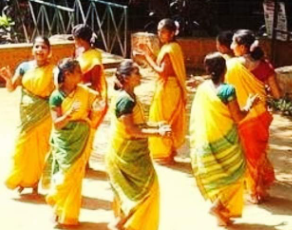Foot-tapping Rhythms of Goa: Exploring Goa’s Most-Loved Folk Dances
goa dance Goa, often associated with pristine beaches and vibrant nightlife, has a cultural side that’s equally captivating. One of the most cherished aspects of Goan culture is its folk dances. These lively and rhythmic performances reflect the spirit, traditions, and vibrant heritage of this coastal paradise. In this informative blog post, we will take you on a vibrant journey through Goa‘s most-loved folk dances, providing insights into their history, significance, and the joy they bring to the Goan community.
Introduction to Goa’s Rich Cultural Tapestry
Goa, known for its stunning coastline, lush landscapes, and vibrant festivals, boasts a diverse and rich cultural heritage. The state’s folk dances are a mirror to this culture, capturing the essence of Goan life, traditions, and celebrations. These dances are not just performances; they are an integral part of festivals, rituals, and communal gatherings that bring communities together.
Fugdi: The Joyful Celebration of Womanhood
Fugdi is one of Goa’s most beloved and iconic folk dances. It is often performed during festivals, weddings, and other celebratory occasions. What sets Fugdi apart is its focus on female participation. Women from the community come together, forming a circle, and dance in synchronisation to the rhythmic beats of traditional instruments. The movements are graceful and expressive, celebrating the spirit and strength of Goan women. Fugdi is not just a dance; it’s a celebration of womanhood, unity, and joy.
Dekhni: A Glimpse into Goa’s Romance
Dekhni is a traditional Goan dance that beautifully encapsulates the essence of romance. It is often performed during weddings and other auspicious events. The dance features graceful movements by both male and female dancers, who narrate stories of love and courtship through their choreography. Dekhni is a visual treat that showcases the art of storytelling through dance and the celebration of love, making it an integral part of Goan culture.
Corridinho: The Portuguese Influence
Corridinho is a dance form that bears the influence of Goa’s Portuguese colonial past. It is characterised by lively and quick-paced movements, often accompanied by the melodious sounds of the accordion and violin. Couples come together to dance the Corridinho, and it is a common sight at Goan festivals and events. The dance exudes a sense of joy and celebration, offering a glimpse into the fusion of cultures that has shaped Goa’s identity.
Dhalo: The Harmonious Unity of Community
Dhalo is a Goan folk dance that embodies the spirit of unity and community. It is traditionally performed during agricultural and harvest festivals. Dancers form rows, and their movements are synchronised to the rhythm of the dholki (drum) and other percussion instruments. Dhalo celebrates the agricultural cycle and the collective effort of the community in farming. The dance is not just a visual spectacle; it’s a reflection of the Goan way of life, where togetherness and cooperation are valued.
Mando: The Melodious Expression of Love
Mando is a traditional Goan folk dance that combines music and dance to convey feelings of love and longing. The dance is often accompanied by the melodious tunes of the mandolin and guitar. Dancers, both men and women, move gracefully to the music, expressing emotions through their gestures and footwork. Mando is not just a dance; it’s a poetic expression of love and a cherished part of Goan cultural celebrations.
Parodi: The Energetic Harvest Dance
Parodi is a lively Goan folk dance performed during the harvest season. It is a high-energy dance that involves fast footwork and enthusiastic movements. Dancers typically wear colorful traditional attire, and the dance is accompanied by the vibrant sounds of the ghumot (a traditional drum). Parodi celebrates the bountiful harvest and is a testament to the joy and vitality of rural life in Goa.
Shigmo: The Grand Carnival of Goa
Shigmo, also known as Shishirotsava, is one of the most spectacular and grand folk festivals in Goa. It is celebrated with great pomp and fervour and features a variety of traditional dances. The festival marks the arrival of spring and is a riot of colours, music, and dance. Performers don elaborate costumes and masks, dancing to the beats of traditional instruments. Shigmo is a vibrant showcase of Goan culture, and its dances are a testament to the state’s rich heritage.
Conclusion – Preserving Goa’s Folk Dance Traditions
In conclusion, Goa’s folk dances are not just performances; they are expressions of joy, love, unity, and celebration. These dances have a profound connection to the cultural identity of Goa, reflecting its history, traditions, and values. As the state evolves and embraces modernity, it is heartening to see that these cherished dance traditions continue to be preserved and celebrated.
For those visiting Goa, witnessing these folk dances is a unique opportunity to delve into the heart and soul of this coastal paradise. The foot-tapping rhythms, colourful costumes, and joyful expressions are a testament to the enduring spirit of Goa and its people. So, the next time you find yourself in Goa, don’t miss the chance to immerse yourself in the vibrant world of Goan folk dances, where every step is a celebration of life itself.
read more: Rhythmic Tales from the Hills: Exploring the Enchanting…

